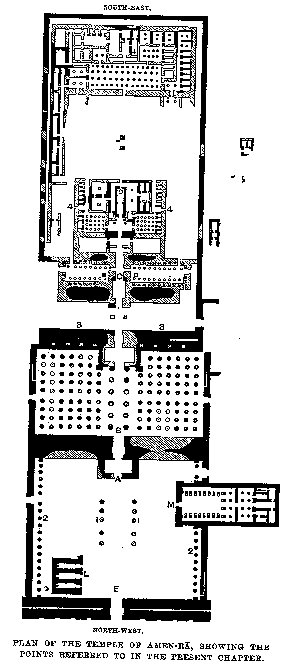Lockyear convincingly shows that the ancient Egyptians used astronomical observatories in the form of temples, e.g. the temple of Amen-Ra at Karnak. "Although the Egyptians knew nothing about telescopes, it would seem that they had the same problem before them which we solve by a special arrangement in the modern telescope - they wanted to keep the light pure, and to lead it into their sanctuary as we lead it to the eyepiece. To keep the light that passes into the eyepiece of a modern telescope pure, we have between the object-glass and the eyepiece a series of what are called diaphragms; that is, a series of rings right along the tube, the inner diameter of the rings being greatest close to the object-glass, and smallest close to the eyepiece; these diaphragms must so be made that all the light from the object-glass shall fall upon the eyepiece, without loss or reflection by the tube. These apertures in the pylons and separating walls of Egyptian temples exactly represent the diaphragms in the modern telescope."
|
